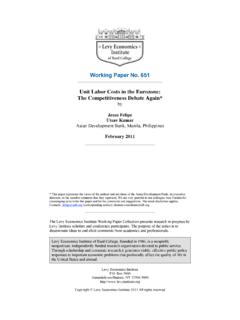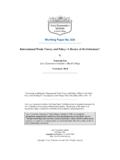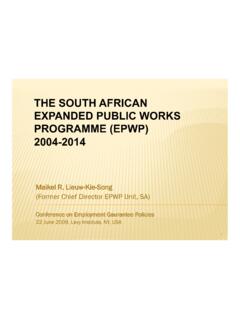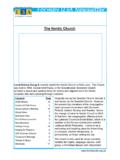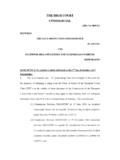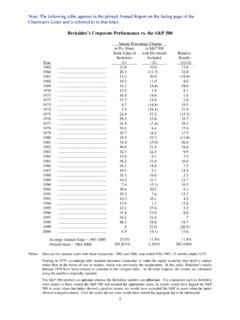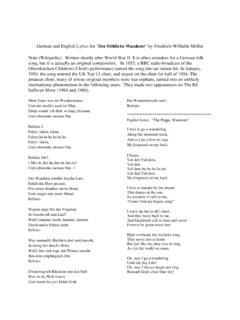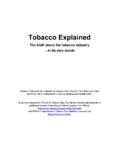Transcription of Working Paper No. 74 - Levy Economics Institute
1 Working Paper No. 74 The financial instability hypothesis * by Hyman P. Minsky The Jerome Levy Economics Institute of Bard College May 1992 * Prepared for Handbook of Radical Political Economy, edited by Philip Arestis and Malcolm Sawyer, Edward Elgar: Aldershot, 1993. The Levy Economics Institute Working Paper Collection presents research in progress by Levy Institute scholars and conference participants. The purpose of the series is to disseminate ideas to and elicit comments from academics and professionals.
2 Levy Economics Institute of Bard College, founded in 1986, is a nonprofit, nonpartisan, independently funded research organization devoted to public service. Through scholarship and economic research it generates viable, effective public policy responses to important economic problems that profoundly affect the quality of life in the United States and abroad. Levy Economics Institute Box 5000 Annandale-on-Hudson, NY 12504-5000 Copyright Levy Economics Institute 1992 2013 All rights reserved ISSN 1547-366X The financial instability hypothesis has both empirical andtheoretical readily observed empirical aspect isthat,from time to time.
3 Capitalist economies exhibit inflationsand debt deflations which seem to have the potential to spin outof such processes the economic system's reactions toa movement of the economy amplify the movement--inflation feedsupon inflation and debt-deflation feeds upon interventions aimed to contain the deterioration seemto have been inept in some of the historical episodes are evidence supporting the view that theeconomy does not always conform to the classic precepts of Smithand Walras:they implied that the economy can best be understoodby assuming that it is constantly an equilibrium seeking andsustaining classic description of a debt deflation was offered byIrving Fisher (1933) and that of a self-sustainingdisequilibrating processes by Charles Kindleberger (1978).
4 Martin Wolfson (1986) not only presents a compilation of data onthe emergence of financial relations conducive to financialinstability,but also examines various financial crisis theoriesof business economic theory,the financial instability hypothesis isan interpretation of the substance of Keynes's "General Theory".This interpretation places the General Theory in theGeneral Theory was written in the early 193Os, the greatfinancial and real contraction of the United States and the other1capitalist economies of that time was a part of the evidence thetheory aimed to financial instability hypothesisalso draws upon the credit view of money and finance by JosephSchumpeter (1934, )Key works for the financial instabilityhypothesis in the narrow sense are, of course, Hyman P.
5 Minsky(1975, 1986).The theoretical argument of the financial instabilityhypothesis starts from the characterization of the economy as acapitalist economy with expensive capital assets and a complex,sophisticated financial economic problem isidentified following Keynes as the"capital development of theeconomy,"rather than the Knightian "allocation of givenresources among alternative employments."The focus is on anaccumulating capitalist economy that moves through real capital development of a capitalist economy isaccompanied by exchanges of present money for future money pays for resources that go into the production ofinvestment output,whereas the future money is the "profits"which will accrue to the capital asset owning firms (as thecapital assets are used in production).
6 As a result of theprocess by which investment is financed, the control over itemsin the capital stock by producing units is financed byliabilities--these are commitments to pay money at datesspecified or as conditions each economic unit, theliabilities on its balance sheet determine a time series of prior2payment commitments,even as the assets generate a time series ofconjectured cash structure was well stated by Keynes (1972) :There is a multitude of real assets in the world whichconstitutes our capital wealth - buildings, stocks ofcommodities,goods in the course of manufacture and oftransport,and so nominal owners of theseassets,however,have not infrequently borrowed money(Keynes'emphasis) in order to become possessed of them.
7 Toa corresponding extent the actual owners of wealth haveclaims,not on real assets, but on considerablepart of this financing takes place through the bankingsystem, which interposes its guarantee between itsdepositors who lend it money,and its borrowing customers towhom it loans money wherewith to finance the purchase ofreal interposition of this veil of moneybetween the real asset and the wealth owner is an especiallymarked characteristic of the modern world."( )This Keynes"veil of money"is different from the QuantityTheory of money "veil of money.
8 "The Quantity Theory "veil ofmoney"has the trading exchanges in commodity markets be of goodsfor money and money for goods: therefore, the exchanges arereally of goods for Keynes veil implies that money isconnected with financing through part of the financingof the economy can be structured as dated payment commitments inwhich banks are the central money flows are firstfrom depositors to banks and from banks to firms:then,at somelater dates,from firms to banks and from banks to ,the exchanges are for the financing ofinvestment,and subsequently,the exchanges fulfill the priorcommitments which are stated in the financing a Keynes"veil of money" world, the flow of money tofirms is a response to expectations of future profits, and the3flow of money from firms is financed by profits that the Keynes set up.
9 The key economic exchanges takeplace as a result of negotiations between generic bankers andgeneric documents "on the table" in suchnegotiations detail the costs and profit expectations of thebusinessmen:businessmen interpret the numbers and theexpectations as enthusiasts, bankers as ,in a capitalist economy the past, the present, and thefuture are linked not only by capital assets and labor forcecharacteristics but also by financial keyfinancial relationships link the creation and the ownership ofcapital assets to the structure of financial relations andchanges in this complexity may resultin several layers of intermediation between the ultimate ownersof the communities'wealth and the units that control and operatethe communities' of business profits determine both the flow offinancing contracts to business and the market price
10 Of existingfinancing realizations determine whether thecommitments in financial contracts are fulfilled--whetherfinancial assets perform as the pro formas indicated by the modern world,analyses of financial relations andtheir implications for system behavior cannot be restricted tothe liability structure of businesses and the cash flows (by the way of their ability to borrow on4credit cards for big ticket consumer goods such as automobiles,house purchases,and to carry financial assets), governments(with their large floating and funded debts), and internationalunits (as a result of the internationalization of finance) haveliability structures which the current performance of the economyeither validates or increasing complexity of the financial structure, inconnection with a greater involvement of governments asrefinancing agents for financial institutions as well as ordinarybusiness firms (both of which are marked characteristics of themodern world)



